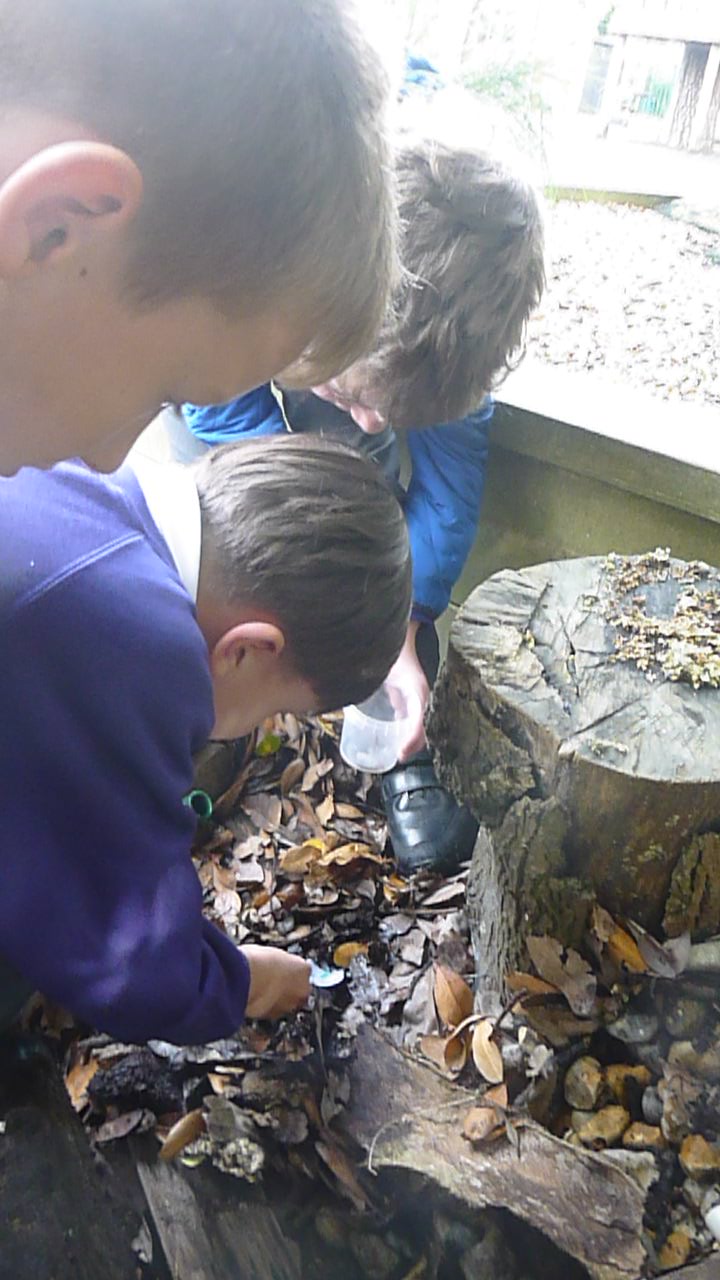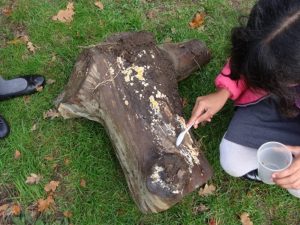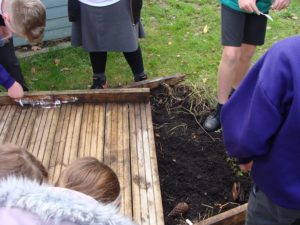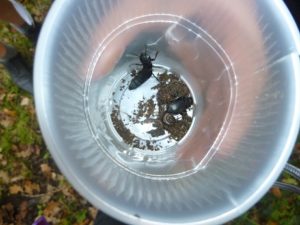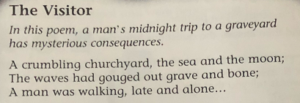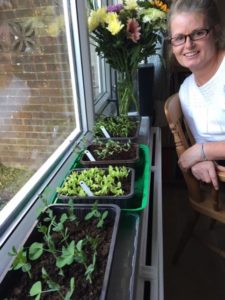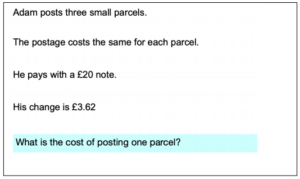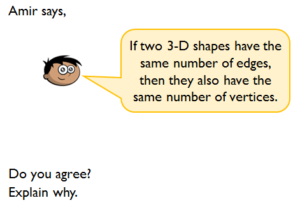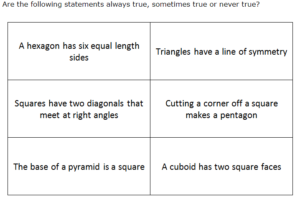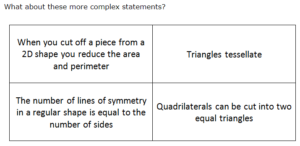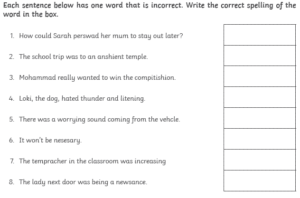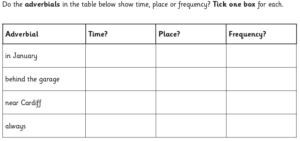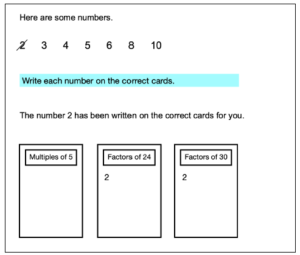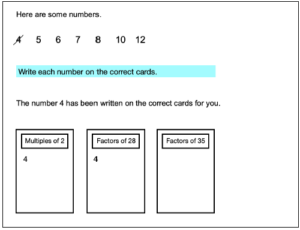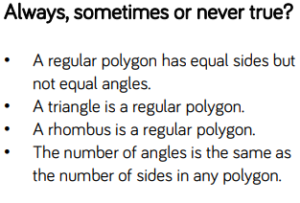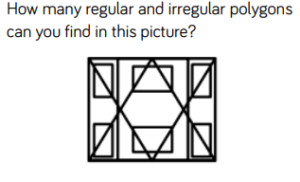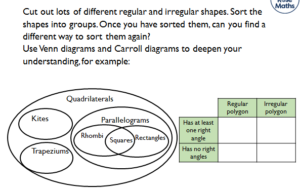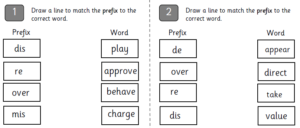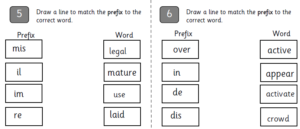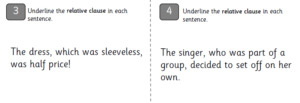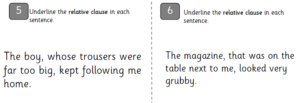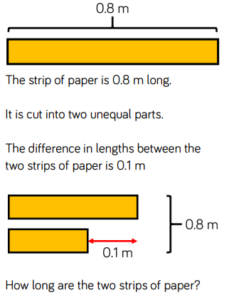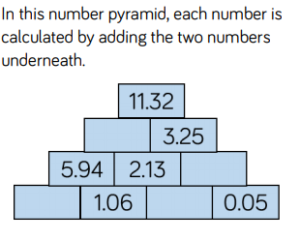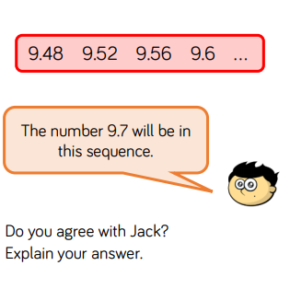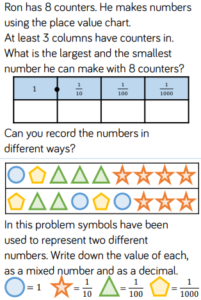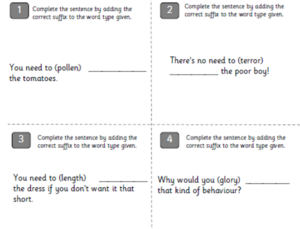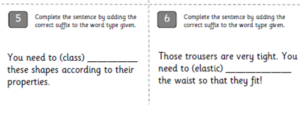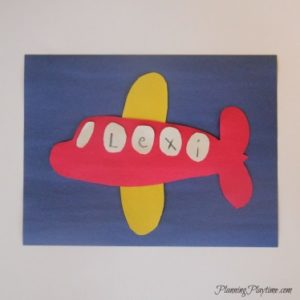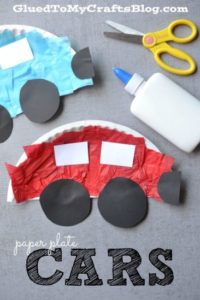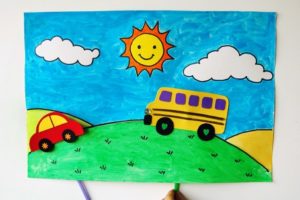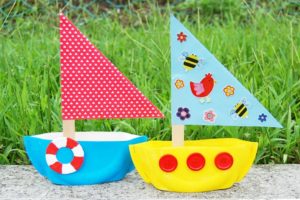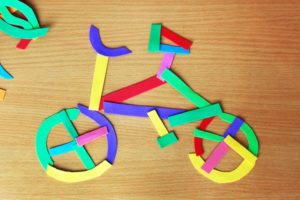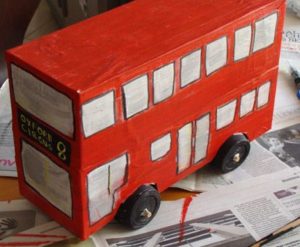Superheroes and Super Minibeasts
This week, in English, children have started a new unit based on Superheroes. They have used a range of persuasive language including persuasive sentence openers and detailed reason to persuade the reader to agree with their point of view. Children have started to divide using their multiplication factors and estimate in division problems. Next week they will begin to apply their grouping knowledge to solve problems and extend division facts.
For Science this week we have begun our habitat/environment study this week which we will continue through the year. It amazes us to see children continually be excited about being excited about being outside in nature exploring wildlife. Through play, exploration, talk and sheer joy, they talk about cause and effect of animal habitats and scientifically reason why this happens. A blessing for teachers to see this learning taking place and experiences that stay with the children.
Home Learning:
The yellow Home Reading Journal was returned last week so the children could write a review of the book they are reading/ a book they have read. This was due Thursday 15th October. If the book review was not returned this week, could children review a book/part of a book for Thursday 22nd October. Parents will need to sign off book reviews to show that children have completed the review task and have spoken about what has happened in the book, favourite parts/characters etc.
In their red Homework Book children have weekly vocabulary and maths home learning they are expected to complete. MyMaths login details have been given to children in order to complete the tasks this week. Please ensure children practise times tables at least 10 minutes a day. We will be testing times tables weekly from next week to ensure children maintain a quick recall to help with their mental and formal calculations.
Please find as many opportunities as possible, as a family, to explore the vocab words sent home this week so the children will be able to apply them to our new guided reading unit based on poetry. Maths and Vocab home learning is due Thursday 22nd October.
| Vocabulary homework:
consequences gouged grasp scooped clattered
You need to find the meanings of these words that are part of this poem. |
As part of an individual choice of home learning, they also have their creative homework task ideas for the autumn term– one piece should be completed each half term. As the first half term is nearing next week, children should have completed one piece of home learning of their choice to share after half term.
Reading Passport and Year 5 Must Reads:
Keep up the great work with reading the books from the reading passport. The children who complete their passport will be put into a draw for the chance to see Pinocchio at the theatre. Also, the class with the most completed entries get to have a complete afternoon of sport with CM Sports. It’s all to play for!!!
As we are coming to the end of the first half term, the children should have been able to read or be read to one of the year group must reads. This is important for Year 5 children to hear quality vocabulary that they will be exposed to in upper primary school to also to prepare them for secondary school.
** Reminders – it’s week 1 next week which means PE lessons will be on Wednesday 21st October. Children should come to school wearing their PE kit.
‘Evacuation Day’ on Thursday 12th November. We are asking children to come to school dressed as an evacuee on that day.
As the weather begins to turn colder and wetter, please remember children will need a coat to keep warm and dry. Water bottles should be available in the classroom so if a water bottle is provided in the lunchbox then it should be available in the classroom in the afternoon. Breaktime snacks will be kept in the classroom until breaktime so could they be kept separately from lunchboxes so children can unpack easily in the morning as they will not be able to access lunchboxes until lunchtime.
Have a wonderful weekend,
The Year 5 team.
P.S The secret password is nemesis.
Which class will have the most passwords on Monday?
Devouring words and painting a picture.
This week, in Year 5, children have been writing their sensory descriptions based on an image from ‘The Day War Came’ by Nicola Davies. They have used a range of descriptive language including similes and personification to help create a visual image for the reader. Children have been developing their ability to multiply 2 and 3-digit numbers by single digits. Next week they will begin to apply this knowledge to solve problems.
Your child should have taken home a letter about their ‘Evacuation Day’ on Thursday 12th November. We are asking children to come to school dressed as an evacuee on that day.
Homework:
Your child will have their yellow Home Reading Journal returned this week so they can write a review of the book they are reading/ a book they have read. This is due Thursday 15th October.
In their red Homework Book they have some spelling and maths home learning they are expected to complete. This is due Thursday 15thth October. Please find as many opportunities as possible, as a family, to explore the vocab words sent home this week so the children will be able to apply them to our new unit based on superheroes.
In their Homework book, they also have their creative homework task ideas for the autumn term– one piece should be completed each half term. This is ongoing.
Reading passports. The children who complete their passport will be put into a draw for the chance to see Pinocchio at the theatre. The class with the most completed entries get to have a complete afternoon of sport with CM Sports.
** Reminders – it’s week 2 next week which means PE lessons will be on Monday. Children should come to school wearing their PE kit.
As the weather begins to turn colder and wetter, please remember children will need a coat to keep warm and dry. The rain caught out several children this week
Have a wonderful weekend,
The Year 5 team.
Rain has yet to stop play…
We continue with our unit based on the book ‘The Day War Came’ (which is on the reading passport). The children have been working on writing sentences with different sentence starters and adding subordinate clauses at different points of their sentence structures. In maths, we completed our addition work to find perimeters of shapes before moving to our new domains of multiplication and division. This makes it even more important that children are practicing their multiplication facts regularly.
As a team, we wanted to say how proud we are of the standard of homework that has been handed in. The creative homework has been varied and exciting to see, while the presentation of vocabulary and spelling work has been stunning. Thank you for your support in ensuring children complete their work on time. Many of the children have also been telling us about the ‘Must Read’ books they are reading – most have been enthralled by the different types of texts they are reading.
Homework:
Your child will have their yellow Home Reading Journal returned this week so they can write a review of the book they are reading/ a book they have read. This is due Thursday 15th October.
In their red Homework Book they have some spelling and maths home learning they are expected to complete. This is due Thursday 8th October.
In their Homework book, they also have their creative homework task ideas for the autumn term– one piece should be completed each half term. This is ongoing.
Reading passports. The children who complete their passport will be put into a draw for the chance to see Pinocchio at the theatre. The class with the most completed entries get to have a complete afternoon of sport with CM Sports.
** Reminders – it’s week 1 next week which means PE lessons will be on Wednesday Children should come to school wearing their PE kit.
As the weather begins to turn colder and wetter, please remember children will need a coat to keep warm and dry. The rain caught out several children this week
Have a fantastic weekend,
The Year 5 team.
Working hard
It’s been a busy week with our learning. We have just begun our new English unit based on the book ‘The Day War Came’ (which is on the reading passport). The children have been inferring meaning from a picture then using personification and similes to write descriptively. In maths, we have been applying our formal methods of addition and subtraction to solve word problems.
We also had our Mass on Tuesday this week – sharing a reflective time with Father Jeremy and Miss Keogh (the chaplain from Oaklands). Well done to all the readers, who read clearly and confidently. Hopefully we’ll be able to share a Mass with parents again sometime soon.
Homework:
Your child will have their yellow Home Reading Journal returned this week so they can write a review of the book they are reading/ a book they have read. This is due Thursday 1st October.
They will also have received their Homework Book with some vocabulary home learning and the maths they are expected to complete. This is due Thursday 1st October.
In their Homework book, they also have their creative homework task ideas for the autumn term– one piece should be completed each half term.
Reading passports have been sent out. The autumn completion deadline will be given in due course. The children who complete their passport will be put into a draw for the chance to see Pinocchio at the theatre. The class with the most completed entries get to have a complete afternoon of sport with CM Sports.
** Reminders – it’s week 2 next week which means PE lessons will be on Monday! Children should come to school wearing their PE kit.
As the weather begins to turn colder and wetter, please remember children will need a coat to keep warm and dry.
Have a lovely weekend,
The Year 5 team.
Great second week!
Dear all,
As the second week of learning comes to a close, we all feel that we have come a long way since returning for the autumn term. Routines are now more confidently established and the children are getting into their stride with their learning. It continues to be wonderful for us to get to know the children further.
We hope you have had a chance to digest all the information from the letters that have been sent out over the last two weeks. If you need any clarification, then please phone the office or catch us at the end of the day on the playground.
Homework:
Your child will have their yellow Home Reading Journal returned this week so they can write a review of the book they are reading/ a book they have read. This is due Thursday 1st October.
They will also have received their Homework Book with spellings to learn, some vocabulary home learning and the maths they are expected to complete. This is due Thursday 24th September.
In their Homework book, they also have their creative homework task ideas for the autumn term– one piece should be completed each half term.
Reading passports have been sent out. The autumn completion deadline will be given in due course.
Finally, after going through the first part of the home diary last week, please go through the last six pages together. It has some interesting and useful information for children. Also, your child should fill in the home learning tasks they have completed for each day. Please bring this home diary in every Thursday.
** Reminder – it’s week 1 next week which means PE lessons will be on Wednesday! Children should come to school wearing their PE kit.
Your child will have brought a book home from our class library, please could you send them in with your child on a Thursday, which is when we have our library time. This will be the only opportunity to change it with Mrs Porter as she is visiting each pod once a week this term. If you discover any old library books at home, please return to school and we will pass them on to Mrs Porter.
If you missed our welcome meeting last week, please click on the link below to find our Year 5 welcome information video where you will hear about the routines and expectations for learning in Year 5.
Year 5 welcome video for parents
Have a great weekend and enjoy the continuing sunny weather!
The Year 5 team.
And we’re off…
Welcome to the first Year 5 blog of the year. We have had a busy week getting back into the school routine and catching up! As teachers, it has been a time of putting names to faces and getting to know individual personalities. The pupils have made a fantastic start to their learning – we have been really impressed with their hard working attitude!
You will have received several pieces of paper and a yellow book from your child this week. Hopefully you all have a copy of the Home School Agreement, St Peter’s home learning timings and a list of term dates. You should have seen a letter about the Year 5 ‘Must Reads’ containing information about 6 books we are expecting the children to read over the coming academic year. There was also a letter that explained a bit about the Home Reading Journals (yellow books) we sent home. The first piece of homework is due on Monday. We’ve already had quite a few books back showing some amazing homework.
Please could you get your child to complete the front section of their home learning diary. They should also complete any other relevant information in the correct spaces.
** Reminder – it’s week 2 next week which means PE lessons will be on Monday! Children should come to school wearing their PE kit.
If you have any library books still at home, please could you send them in with your child on Thursday, which is when we have our library time.
Finally, please click on the link below to find our Year 5 welcome information video where you will hear about the routines and expectations for learning in Year 5.
Year 5 welcome video for parents
In the meantime, have a great weekend and enjoy the sunny weather!
The Year 5 team.
Week beginning 17th July, 2020
Adios! Au revoir! Goodbye – it’s been fun!
Messages from:
Miss Stapley
I just wanted to say a huge goodbye to you all as I was so disappointed not to catch up with you at the recent meetings. I have spent two years with each of you and through ups and downs in times it has been lovely to see you all grow into even- more wonderful human beings towards year 6. Enjoy the summer holidays and I’ll look forward to seeing you in September… I will be in my garden tending to (and eating) my vegetable and herb crops – all grown from seeds this year… and hopefully getting my hair cut and coloured before the new term!!!
Mrs Edge
Wow, what a short year! It was fantastic to catch up with some of you at the face to face meetings and it’s brilliant that I see so many of you in the Key Worker groups. Enjoy your summer holiday break so you feel fresh and invigorated, ready for your new adventure in Year 6. You are all amazing and unique individuals, who I have enjoyed teaching this year. I look forward to catching up with you in September. God bless and keep you in His care.
Mr Crozier
It has been a pleasure to teach you all and get to know you this year. Even though our time in Year 5 was cut short you have all made great strides with your learning and I know that you are all ready for lots of exciting new adventures in Year 6. I hope you all have an amazing summer break and I look forward to welcoming you all back to school in September!
Mrs Richardson
Hello Everybody,
I hope you all have a fabulous summer holiday and I’m looking forward to seeing you, and working with you, in September.
Work for the summer:
It’s the summer holidays so no formal home learning will be set – a huge thank you to parents and children alike for the home learning that has been going on during lockdown. It has been lovely to see all your work and your commitment and standard of work has been brilliant. This will stand you in good stead for Year 6.
I’m sure you have some lovely plans for the summer (fingers crossed for good weather!) however we would encourage you to keep up your key skills in:
- Times tables on TT Rockstars
- Maths games on Sumdog
- Spellings from the Year 5/6 spelling list
- Reading – don’t forget the Summer Reading Challenge – details below:
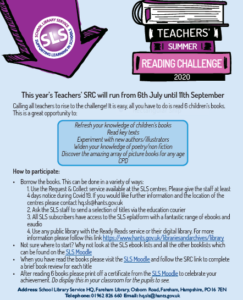
Quick fun Science activities, like the example below, from STEM – https://www.stem.org.uk/resources/elibrary/resource/468235/starters-stem
Have a great summer and we’ll see you in September.
The Year 5 Team
Home Learning Week Beginning 10th July, 2020
Hello Year 5,
Well, this is your final piece of home learning for Year 5! It’s been an odd year, cut short by the pandemic, meaning that we didn’t get a chance to teach you for the whole of the year and we have missed you. Although it has been lovely chatting to you on the telephone, seeing your work via the class email and seeing most of you on the face to face catch up days, it just hasn’t been the same as teaching you for the full year. We all miss your smiling faces, the stories you tell, the hugs you give and the fact that each one of you is unique and special to us.
The blog will remain over the summer, so if there is any work you didn’t manage to complete or activities you want to do over the holidays you can access all blog updates.
** Just a reminder – over the summer you need to keep reading and practising your multiplication facts. This will help you when you return to school in September.
This week’s tasks are as follows:
Reading and Writing:
For your English work this week you will be looking at the skills needed to write a short story in the form of a Hercules themed myth. The first 2 lessons will develop your comprehension skills where you will read some extracts from myth stories. Lessons 3 to 5 will then help you practise some key writing skills before applying them to your own myth story.
Reading
Please continue to ensure that you are reading an age appropriate book for at least 20 minutes each day. It is so important to help you build your vocabulary and develop your fluency and stamina!
Lesson 1: Reading comprehension
https://classroom.thenational.academy/lessons/read-example-text-reading-comprehension-c41757
Lesson 2: Reading comprehension
https://classroom.thenational.academy/lessons/read-example-text-reading-comprehension-1ce6cf
Writing
Lesson 3: To identify the features of a myth
https://classroom.thenational.academy/lessons/read-the-example-and-identify-key-features-9d8f38
Lesson 4: Grammar revision lesson
https://classroom.thenational.academy/lessons/spag-focus-2bb397
Lesson 5: To plan and write a myth
This week’s writing CHALLENGE:
Alma
Alma is a little girl who ventures into town in the snow.
She is drawn to a shop window by a familiar looking doll.
She enters the shop… what will happen when she goes inside?
Click on the link below to watch this short film clip from The Literacy Shed:
https://www.literacyshed.com/alma.html
Task 1:
Draw/describe what you think the owner of the shop looks like? You could also produce a wanted poster.
Task 2:
Write the story of what happens to Alma.
Success criteria:
- Use a variety of sentence length: short sentences for effect, sentences with different clauses.
- Start your sentences in interesting ways.
- Use a range of descriptive language: interesting verbs, adverbs and adjectives, similes and personification
Maths:
Task 1: 20 minutes of times tables work every day. Use TT Rockstars to help you practise.
Task 2: One arithmetic task and one times tables task on Sumdog.
Task 3: There are 2 activities set on My Maths to complete. Use your login details to get onto the website.
Task 4:
Taken from Oak National Academy:
Lesson 1 – complete the quiz.
Watch the video and complete tasks given within it
Complete the activities based on the lesson
Lesson 2 – complete the quiz from the previous lesson
Watch the video and complete tasks given within it
Complete the activities based on the lesson
Lesson 3 – complete the quiz from the previous lesson
Watch the video and complete tasks given within it
Complete the activities based on the lesson
Lesson 4 – complete the quiz from the previous lesson
Watch the video and complete tasks given within it
Complete the activities based on the lesson
Lesson 5 – complete the quiz from the previous lesson
https://classroom.thenational.academy/lessons/to-illustrate-and-name-parts-of-circles/activities/1
Watch the video and complete tasks given within it
https://classroom.thenational.academy/lessons/to-illustrate-and-name-parts-of-circles/activities/2
Complete the activities based on the lesson
https://classroom.thenational.academy/lessons/to-illustrate-and-name-parts-of-circles/activities/3
Task 5:
Taken from HIAS problem solving:
Challenges:
From White Rose Y5 Maths:
From NRICH maths:
Spellings and Grammar:
Task 1: Spelling task on Sumdog.
Task 2: Grammar task on Sumdog.
Task 3:
Rewrite the words spelt incorrectly.
Grammar recap.
Continue to learn the spellings on the Year 5/6 Spelling List – do a few at a time.
Family Science Activity:
Spaghetti Towers
https://www.rigb.org/families/experimental/spaghetti-towers – to watch the video
The activity:
- Make a tower from spaghetti and marshmallows.
- ExpeRiment with the construction of your tower to find out which shapes are best for building with.
- Learn why some shapes are more stable than others when you build a tower.
https://www.rigb.org/docs/spaghettitowers_infosheet_0_1.pdf – for the full information on the activity and questions to ask your child(ren)
You will need:
Packet of spaghetti (uncooked) • Packet of marshmallows
What to do:
Challenge a child or children to use marshmallows (whole ones or pieces) to join lengths of spaghetti together to make the tallest tower possible. You could start by building a simple cube and seeing what you need to do to make a taller structure that remains standing.
Going Further challenge:
- Instead of building a tall tower, you could try to build the strongest bridge from spaghetti and marshmallows.
- You could limit the amount of spaghetti and number of marshmallows to make the task more difficult.
- You could give children a budget with which to ‘buy’ spaghetti and marshmallows and make the ‘cost’ of the tower another element they have to consider.
- Try out this interactive ‘shapes’ lab to see how forces affect different shapes: http://bit.ly/ShapesLab
Have fun!
Topic work – Coasts:
Why do people manage coastal erosion?
List two methods used to manage coastal erosion.
Read the following statement:
“If you ‘protect’ one part of the coast, you merely create problems elsewhere. In addition, the types of sea-wall that often impress landowners can look completely inadequate to the experts, who fear that the walls will eventually fail, leaving owners bitterly disappointed and seeking someone else to blame. Remember coastal erosion will occur – it’s only a question of when.”
What do you think about this statement? Do you agree that it’s a waste to spend money on protecting coastlines?
The Environment Agency proposes that in some areas the battle against coastal erosion and flooding should be abandoned. This is called a ‘managed retreat’.
Who might be angry about the managed retreat scheme? Who might think it is a good idea? Why?
Websites that might help –
https://www.bbc.co.uk/bitesize/clips/z8tyr82
http://www.coolgeography.co.uk/GCSE/AQA/Coastal%20Zone/Management/managing%20coastlines.htm
Music:
Think back over the past school year which started in September 2019. What can you remember doing? Make a list of these things.
Now think of a tune you know well.
Using this tune and the list you have written, can you compose a song about this school year? Perhaps you could record yourself singing it.
R.E.:
As we approach the end of the school year and consider our journey in faith towards God, now is a great time to reflect upon each of the Sacraments that form a special part of this journey. Please choose ONE of the seven Sacraments below: Baptism, Holy Communion, Confirmation, Marriage, Holy Orders, Reconciliation or Anointing of the Sick.
With your chosen sacrament, have a go at ONE of the following tasks…
-
- Write a prayer or poem about your favourite Sacrament. How could you ask for God’s blessing and guidance throughout your Christian journey? Describe how you would feel during the Sacrament.
- Create a stained glass window to represent the key symbol(s) of your chosen Sacrament. What do these symbols mean and why do you think that they are they important?
- Can you find any photographs at home from when you or a family member took part in any of the Sacraments? Discuss what the experience was like and what you can both still remember.
- Make a set of game cards to help you remember each of the sacraments (e.g. Snap, Pairs, Dobble) and how they are similar or different to one another.
- Are there any special garments or items of clothing that you would wear when taking part in your chosen Sacrament? Design an appropriate outfit – which colours or details would be suitable?
- Research how your chosen Sacrament is celebrated across different churches and countries. How do the celebrations compare to each other? Is there anything that surprised you?
Home Learning Week Beginning 3rd July, 2020
Hello Year 5,
It was absolutely lovely catching up with many of you, at the face to face catch up sessions. It was good to see your faces, find out what you’ve been up to and, hopefully, dispel any worries about coming back to school.
Don’t forget you can still email through your one favourite piece of work so that we can see all of the great learning you have been doing.
This week’s tasks are as follows:
Reading and Writing:
For your English work this week you will looking at the skills needed to write a newspaper report. The first 2 lessons will develop your comprehension skills where you will read a report on the extreme sport of free climbing and a report about a UFO crash landing! Lessons 3 to 5 will then help you practise some key writing skills before applying them to your own newspaper report
Reading
Please continue to ensure that you are reading an age appropriate book for at least 20 minutes each day. It is so important to help you build your vocabulary and develop your fluency and stamina!
Lesson 1: Reading comprehension
https://classroom.thenational.academy/lessons/reading-comprehension-9b9274
Lesson 2: Reading comprehension
https://classroom.thenational.academy/lessons/reading-comprehension-d297ca
Writing
Lesson 3: To identify the features of a newspaper report
https://classroom.thenational.academy/lessons/identifying-the-key-features-of-a-newspaper
Lesson 4: To distinguish between direct and indirect speech
https://classroom.thenational.academy/lessons/spag-focus-direct-and-indirect-speech
Lesson 5: To plan and write a newspaper report
This week’s writing CHALLENGE:
Task 1: Question time!
Q1: How were the audience feeling if they were ‘gazing wide -eyed’?
Q2: Can you think of another descriptive way to express that feeling?
Q3: Why is the crowd described as a ‘sea of spectators’?
Q4: What do you think happens next for the person riding the bike?
Q5: If you were in the crowd watching this rider, how would you feel? Can you create a simile to describe your feelings?
Task 2: Sick sentences!
Improve the following three sentences:
1: The bike went up high in the air.
2: The crowd watched.
3: They clapped when he landed.
Task 3: Continue the story
Focused solely on winning the competition, the rider soared towards the sky with the agility and grace of an Olympic gymnast. With a deep breath, he gripped with his hands and released his feet. Nobody could have predicted what followed…
Task 4: Perfect picture
The man riding the bike is taking part in a competition. Can you design a trophy or medal that he might win if he is successful?
Maths:
Task 1: 20 minutes of times tables work every day. Use TT Rockstars to help you practise.
Task 2: One arithmetic task and one times tables task on Sumdog.
Task 3: There are 2 activities set on My Maths to complete. Use your login details to get onto the website.
Task 4:
Taken from Oak National Academy:
Lesson 1 – complete the quiz.
Watch the video and complete tasks given within it
Complete the activities based on the lesson
Lesson 2 – complete the quiz from the previous lesson
Watch the video and complete tasks given within it
Complete the activities based on the lesson
Lesson 3 – complete the quiz from the previous lesson
Watch the video and complete tasks given within it
Complete the activities based on the lesson
Lesson 4 – complete the quiz from the previous lesson
Watch the video and complete tasks given within it
Complete the activities based on the lesson
Lesson 5 – complete the quiz from the previous lesson
Watch the video and complete tasks given within it
Complete the activities based on the lesson
Task 5:
Taken from HIAS problem solving:
Identify multiples and factors.
Challenges:
From White Rose Y5 Maths:
Spellings and Grammar:
Task 1: Spelling task on Sumdog.
Task 2: Grammar task on Sumdog.
Task 3:
To use the prefixes correctly.
To revise grammar rules.
Continue to learn the spellings on the Year 5/6 Spelling List – do a few at a time.
Family Science Activity
If your child has an allergy to eggs – please choose another exciting investigation from https://www.rigb.org/families/experimental
Bouncing Eggs
https://www.rigb.org/families/experimental/eggsperiments – watch the video
- Make an uncooked egg bounce!
- ExpeRiment with different liquids to see what effect they have on eggs.
- Learn how the acid in household liquids like orange juice and vinegar react with eggshells and make them dissolve, leaving the inside of the egg intact.
https://www.rigb.org/docs/dissolving_eggs_infosheet_v2_0_1.pdf – download worksheet for instructions and questions to ask before and after the investigation.
You will need:
5 eggs • Glasses or jars that an egg can fit inside comfortably • Cling film • Oil • Milk • Water • Vinegar • Orange juice
Going further challenge:
- You can use the shell-less eggs you make from this experiment to do another activity which will let you shrink and expand the eggs by placing them in different liquids: http://bit.ly/nakedeggs
- Watch a video of how to make a coloured bouncy egg, then try making one yourself: http://bit.ly/RubberEgg
Topic – India
L.O: To research the key features of a contrasting country.
As part of our country study we would have been researching India, ready for the carnival. Over the coming weeks we will give you areas of research for you to find details and put them together in an interesting way of your choice.
Over the next week, please continue to research these areas:
Sports associated with India/ originating in India. Famous Indian sports personalities.
Wildlife in India – include the habitats, food preferences and drawings/ pictures of the wildlife.
Websites to help:
https://theculturetrip.com/asia/india/articles/the-11-most-famous-indian-sportspersons/
https://www.topendsports.com/world/countries/india.htm
https://wiki.kidzsearch.com/wiki/Sports_in_India
http://www.walkthroughindia.com/wildlife/top-10-wild-animals-of-india/
https://www.kidzworld.com/article/28152-animals-of-india/
https://www.teachindiaproject.org/12_Animals_From_India.htm
Music:
Over the past few weeks, you have listened to 10 pieces of music composed by Musical Trailblazers. Go to the website below and listen to them again.
https://www.bbc.co.uk/teach/ten-pieces/ten-pieces-trailblazers/zfpy7nb
Which was your favourite and why?
Which was your least favourite and why?
Art:
Art Challenge for Father Jeremy:
Father Jeremy has got a very special celebration coming up on 26th July this year. He will be celebrating 45 years since his ordination into the priesthood. I think this is a remarkable achievement and should be marked by your incredible artwork. Therefore, your Art challenge for the next fortnight is to produce a piece of art for Father Jeremy. This can take any form you like from street art, a drawing, collage or even some edible art! As well as being a priest, Father Jeremy has a wide range of interests including walking, reading and nature. So let you creative juices flow and come up with something spectacular….I know you will!
As I have mentioned, this is a two week challenge and I would ask that, as well as me displaying your art on the Blog, would you please keep hold of it (yes even sculptures you may make), so that I can collect it from you, when we are all back in school and put it in a book and then present in to Father Jeremy.
As always, you can still send any other art work to me and I will post that on the Blog too.
Please email your artwork to me:
n.pearson@stpeterswaterlooville.hants.sch.uk
Thank you
Keep creating and keep safe!
Mrs Pearson
Home Learning Week Beginning 26th June, 2020
Hello Year 5,
We’re really looking forward to seeing you face-to-face, those of you who are attending the ‘keeping in touch’ sessions at school. The sessions start the week beginning 29th June. If you want, you could bring in some of the home learning you have been doing or anything you are really proud of, to share.
Don’t forget to email through your one favourite piece of work so that we can see all of the great learning you have done.
This week’s tasks are as follows:
Reading and Writing:
Reading and writing home learning for the week beginning Monday 29th June
For your English work this week you will once again be using the Oaks National Academy website. The focus is on biographical writing. Remember a biography is when someone writes about another person’s life. The first 2 lessons will develop your comprehension skills where you will read and answer questions individuals who have influenced the world. Lessons 3 to 5 will then help you practise some key writing skills before applying them to your own short biography.
Reading
Please continue to ensure that you are reading an age appropriate book for at least 20 minutes each day. It is so important to help you build your vocabulary and develop your fluency and stamina!
Lesson 1: Reading comprehension
https://classroom.thenational.academy/lessons/read-example-text-reading-comprehension-983dac
Lesson 2: Reading comprehension
https://classroom.thenational.academy/lessons/read-example-text-reading-comprehension-2443eb
Writing
Lesson 3: To identify the features of a text
https://classroom.thenational.academy/lessons/read-the-example-and-identify-key-features-e2f1e2
Lesson 4: Using parenthesis accurately in your writing.
https://classroom.thenational.academy/lessons/spag-focus-b2bdf1
Lesson 5: To plan and write a biography.
CHALLENGE:
If you would like an extra challenge for your writing this week, please complete the activities below using this image as a stimulus:
Task 1: Question time
The first moments of a turtle’s life are critically important for its survival chances. Why do you think this is the case?
Why is it that female turtles lay their eggs on the beach?
Can you think of any other animals that live in the water and on the land?
What are the differences between amphibians and reptiles? Which group does the turtle belong to?
Task 2: Continue to story
She blinked her sleepy eyes as she took in her first sights of the world around her. With an almighty effort she pushed back her legs, breaking away another tiny fragment of her shell.
Soon, she would be free. Soon, she would have to tackle her next enormous challenge. It wasn’t going to be easy. Her epic journey was only just beginning…
Task 3: Perfect picture!
Soon, the turtle will enter the ocean. Can you draw or describe the moment when the turtle first reaches the water?
Maths:
Task 1: 20 minutes of times tables work every day. Use TT Rockstars to help you practise.
Task 2: One arithmetic task and one times tables task on Sumdog.
Task 3: There are 2 activities set on My Maths to complete. Use your login details to get onto the website.
Task 4:
Taken from Oak National Academy
Lesson 1 – complete the quiz from the previous lesson
Watch the video and complete tasks given within it
Complete the activities based on the lesson
Lesson 2 – complete the quiz from the previous lesson
Watch the video and complete tasks given within it
Complete the activities based on the lesson
Lesson 3 – complete the quiz from the previous lesson
Watch the video and complete tasks given within it
Complete the activities based on the lesson
Lesson 4 – complete the quiz from the previous lesson
Watch the video and complete tasks given within it
Complete the activities based on the lesson
Lesson 5 – complete the quiz from the previous lesson
Watch the video and complete tasks given within it
Complete the activities based on the lesson
Task 5:
Taken from HIAS problem solving:
Challenges:
From White Rose Y5 Maths:
Spellings and Grammar:
Task 1: Spelling task on Sumdog.
Task 2: Grammar task on Sumdog.
Task 3:
To use the correct suffixes.
To revise grammar rules.
Continue to learn the spellings on the Year 5/6 Spelling List – do a few at a time.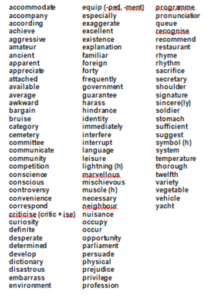
Family Science Activity
Giant Bubbles
https://www.rigb.org/families/experimental/giant-bubbles – watch the video
- Make a home-bubble mixture and wands. Use them to look more closely at the characteristics and behaviour of soap bubbles.
- ExpeRiment with different shapes and sizes of bubbles and see what you can and cannot control about bubbles. Learn how to make giant bubbles and find out why bubbles are usually round.
- Learn how to make giant bubbles and find out why bubbles are usually round.
https://www.rigb.org/docs/giantbubbles_infosheet_0_0.pdf – details on the information sheet.
You will need:
- Good quality washing up liquid
- Water
- Glycerin (optional)
- Plastic tub or other container for bubble mixture
- Measuring jug (optional)
- Various things with holes in them for blowing bubbles with. Watch the video for ideas. Straws, pipe cleaners, paperclips, coat hangers, cookie cutters and cake tins with removable bottoms are all particularly good.
- For giant bubbles: wooden spoons (or other sticks), a couple of metres of string and a small weight you can thread through it, like a metal key ring or nut.
What to do:
A mixture we found that works is 1 litre of water, 100ml of washing up liquid and 30 ml (2 tablespoons) of glycerin. Blow some bubbles!
Put a straw into your bubble solution and try blowing gently into the liquid. You should be able to make a lot of bubbles very quickly. Then dip one end of a straw into the solution, take it out and blow gently through the other end. See if you can control the size of bubble you can blow out of the straw.
Try making bubbles using things with bigger holes, like a paperclip or pipe cleaner bent into a circle. Try poking a dry finger into a bubble, then try the same thing after dipping your finger in bubble solution.
Try making bubbles inside bubbles by poking a straw dipped in bubble solution into an existing bubble and blowing again.
Try out objects with different shaped holes, like cookie cutters or pipe cleaners bent into other shapes. Try objects with really big holes, like a coat hanger or a cake baking tin with its bottom removed. Try making giant bubbles with the special wand we show you how to make in the video.
Going Further:
- You can experiment with your bubble mixture and giant bubble wand to see just how big you can get your bubbles to be. There are lots of different bubble mixture recipes on the internet, just search for “soap bubble recipe”.
- You could try making two or three of them and comparing how good the bubbles they make are.
Topic – India
L.O: To research the key features of a contrasting country.
As part of our country study we would have been researching India, ready for the carnival. Over the coming weeks we will give you areas of research for you to find details and put them together in an interesting way of your choice.
Over the next week, please start to research these NEW areas:
Sports associated with India/ originating in India. Famous Indian sports personalities.
Wildlife in India – include the habitats, food preferences and drawings/ pictures of the wildlife.
Websites to help:
https://theculturetrip.com/asia/india/articles/the-11-most-famous-indian-sportspersons/
https://www.topendsports.com/world/countries/india.htm
https://wiki.kidzsearch.com/wiki/Sports_in_India
http://www.walkthroughindia.com/wildlife/top-10-wild-animals-of-india/
https://www.kidzworld.com/article/28152-animals-of-india/
https://www.teachindiaproject.org/12_Animals_From_India.htm
Music
Go to the website below and watch Naomi Wilkinson’s video about Hans Zimmer
https://www.bbc.co.uk/teach/ten-pieces/classical-music-hans-zimmer-earth/zh4k382
Why is Hans Zimmer considered a musical trail blazer?
Now listen to the whole piece in the second video.
Zimmer tells us to,
‘Do what you wanna do with it!’
How can you ‘play and get creative’ with this piece?
R.E.
Our school patronal feast day takes place on Sunday 28th June. In order to prepare for this special time of the year, please choose ONE of the following activities in order to learn more about St. Peter…
- Write a diary entry as St. Peter, when he escaped from prison. Describe how he felt when the Lord sent an angel to free him from the jail that Herod had cruelly locked him up in. How did they get out of the prison?
- Jesus told Peter, ‘I will give you the keys to the Kingdom of Heaven’. Design the keys and include as many symbols as you can to represent St. Peter and why he was so special. What would the keys be made of?
- Jesus said to Peter, ‘You are a rock, and on this rock I will build my church’. Could you paint or decorate a stone or pebble, to show ways in which to build God’s church? (e.g. by spreading love, faith and Good News).
- Create a selection of short prayers to ask for God’s guidance during the global pandemic. How could we demonstrate the courage, faith and commitment that was demonstrated by St. Peter, as we work to support others?
- Take a look at the St. Peter’s logo on our school website. Can you re-design the crest so it reflects the qualities of St. Peter? (e.g. trust, hope, responsibility). Why did Jesus say ‘feed my lambs’? How might St. Peter ask us to continue God’s work on earth?
- Use the internet to research St. Peter – can you make a fact file about our school saint? Which key words might you use as part of your factual information page? Were there any articles about St. Peter that particularly interested or surprised you?
Art
Art Challenge: The Great Getaway! TRANSPORT
The title for your art this week is The Great Getaway! TRANSPORT. This can take the form of a drawing, a painting, a sculpture, a collage or anything else that you would like to create. As always, I’m sure you will impress me with your creativity!
Here are some ideas:
CHALLENGE: Design your own vehicle, maybe one that flies and can float on water!
However, if this doesn’t appeal to you then you can still send any other art work to me and I will post that on the Blog too.
Please email your artwork to me:
n.pearson@stpeterswaterlooville.hants.sch.uk
Thank you
Keep creating and keep safe!
Mrs Pearson
